#Studio in China Town
Explore tagged Tumblr posts
Text

#agency agency#summer solstice sigil#zhineng qigong#Adelaide airport#Brown Hill SA#A-Frame Caravan#Studio in China Town#positive information#world pool#24 kanye leak
2 notes
·
View notes
Text
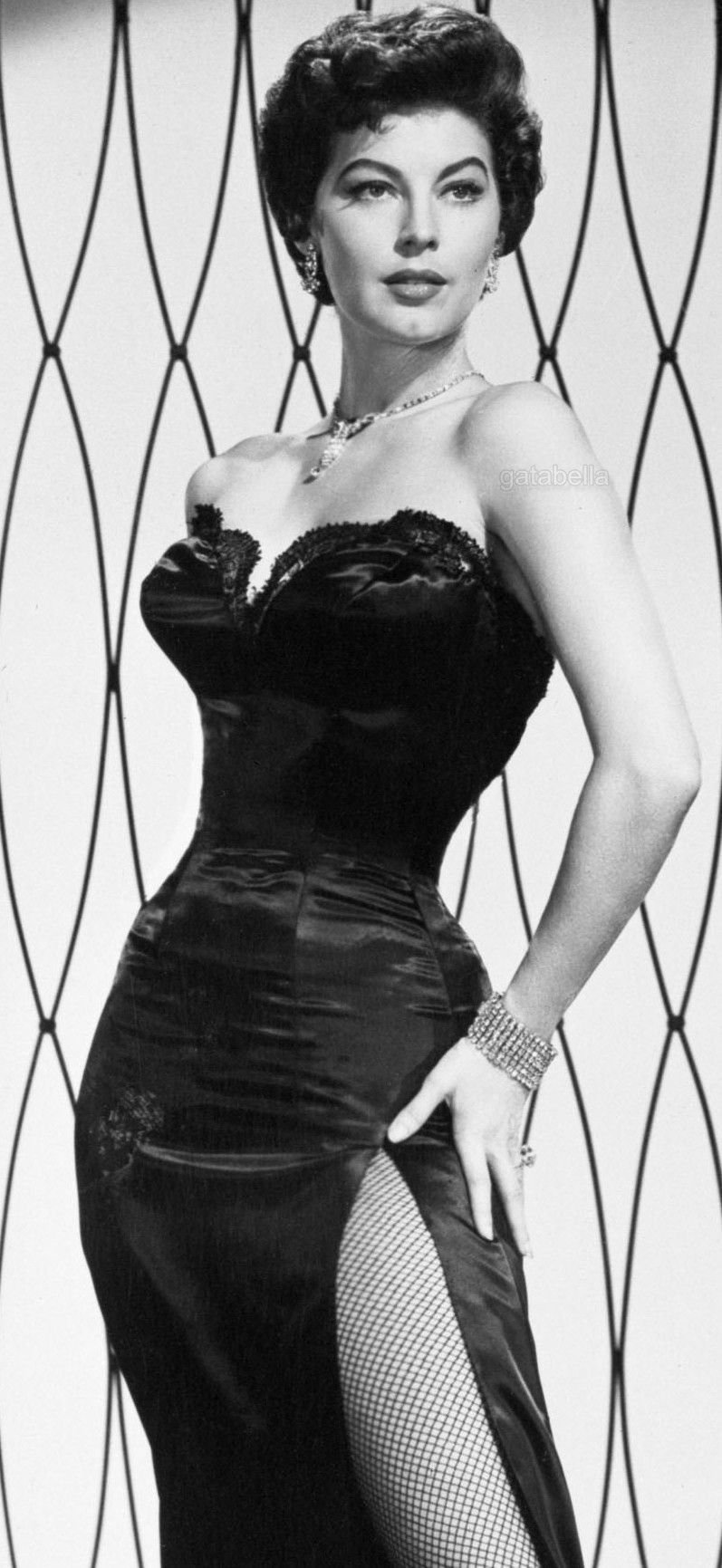
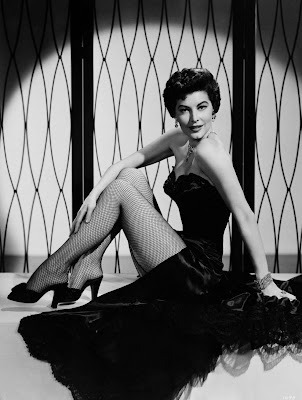
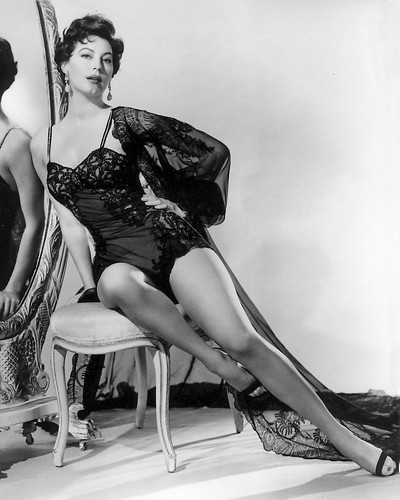
Soon after Gardner arrived in Los Angeles, she met fellow MGM contract player Mickey Rooney; they married on January 10, 1942. The ceremony was held in the remote town of Ballard, California because MGM studio head Louis B. Mayer was worried that fans would desert Rooney's Andy Hardy movie series if it became known that their star was married. Gardner divorced Rooney in 1943, citing mental cruelty; privately blaming his gambling and womanizing, she didn't ruin his on-screen image as the clean-cut, judge's son Andy Hardy that the public adored.
Gardner's second marriage was equally brief, to jazz musician and bandleader Artie Shaw, from 1945 to 1946. Shaw previously had been married to Lana Turner. Gardner's third and last marriage was to singer and actor Frank Sinatra from 1951 to 1957. She later said in her autobiography that he was the love of her life. Sinatra left his wife Nancy for Gardner, and their marriage made headlines.
Sinatra was blasted by gossip columnists Hedda Hopper and Louella Parsons, the Hollywood establishment, the Catholic Church, and by his fans for leaving his wife. Gardner used her considerable influence, particularly with Harry Cohn, to get Sinatra cast in his Oscar-winning role in From Here to Eternity (1953). This role and the award revitalized both Sinatra's acting and singing careers.
The Gardner-Sinatra marriage was tumultuous. Gardner confided to Artie Shaw, her second husband, that, "With him [Frank], it's impossible...It's like being with a woman. He's so gentle. It's as though he thinks I'll break, as though I'm a piece of Dresden china, and he's gonna hurt me." During their marriage, Gardner became pregnant twice, but aborted both pregnancies. "MGM had all sorts of penalty clauses about their stars having babies", according to her autobiography, which was published eight months after her death. Gardner filed for divorce in 1954, and the divorce was finalized in 1957. Following their divorce, Gardner and Sinatra remained good friends for the rest of her life. Of the support Sinatra gave Gardner, Ian McKellen commented that "If you have been married to Frank Sinatra, you don't need an agent".
41 notes
·
View notes
Text
All & Everyone, Everyone & All, meet Francesca Saverio Cabrini, my new human hero.

She accomplished so much in her lifetime, and I strive to do as much good in the world as she did.
Recently, Angel Studios made an entire film about her, and I think showing it in theatres during March was very intentional. I cried while watching it, which doesn't happen with a lot of films. It was fabulous, and I highly recommend you see it.
Cabrini was an Italian nun who lived in a time when Italian immigrants were hated by the people already living in America.
As a teen, when she first wanted to become a nun, she was denied several times by different places because she had a weak constitution due to a near-death experience she had as a child, when she almost drowned.
Denied her request to start and lead a mission in China, she was allowed to go to New York, to start an orphanage there.
Once there, in a town called Five Points, she found that even the rats had it better than the children in the streets, most of which were Italian immigrants. She started the orphanage with what little she had, but it became quickly apparent that there wasn't nearly enough room.
Despite great odds, she founded several orphanages, and eventually even fought to establish a hospital, hiring mostly Italians, with the aim to provide the highest services, to both the American socialite and Italian immigrant, and run entirely by women.
She went on to found many hospitals of the same nature, all over the world, even deep in China where she had originally longed to serve.
She had to fight every moment of her life to be allowed to do good, simply because faithless men did not believe what she proposed was even possible, much less worth it.
She was not always alone, though. She made genuine friends along the way, and it's important to know that she embarked on the journey with fellow Sisters by her side. She did not try to do things alone. She relied on their support many times, as any wise, good leader ought.
Remember her name, and her example, and teach all those you know about this incredible person who deserves far more recognition.
To learn more about her, I highly recommend you watch the film, and you can also read her Wikipedia article:
#women's history month#women in history#incredible women#historical figures#historical film#cabrini#Frances Xavier Cabrini#St. Cabrini#Saint Cabrini#Francesca Saverio Cabrini#history
20 notes
·
View notes
Text
Valoran Town (Season 1) has concluded!
If anyone missed it, it's a official League of Legends: Wild Rift China animated series made by the same studio who animated All Saints Street!
It features such characters as Lux, Jinx, Ezreal and Veigar (and many more!) and thanks to group effort it's now on YouTube in HD, translated into 9 different languages*! :D
(*some episodes are still being translated, but English is available for every one)
I'm dropping the playlist link again 🥰
#valoran town#league of legends#lux#jinx#ezreal#veigar#miss fortune#sett#yuumi#lulu#teemo#garen#yasuo#yone#no keviego though... </3#im sooo proud of the lol community for making this possible#now praying they dont ban my channel teehehee
51 notes
·
View notes
Text
Via Discovolo by MomSonSimFun





Do you like Monte Vista but maybe not the size or pre-population of Monte Vista? Then this world might be for you. It's a smaller island (1024x1024), with many of the buildings in Mediterranean style. It gives me a bit of Isle of Capri vibes, with its multi-level terrain sculpting, and with many of the lots built cliffside.
It's an old word, uploaded in August of 2010, when the only EPs that existed were World Adventures and Ambitions, and this world uses items from both. It uses a few decorative things from the Store, but there's no CC. All of the lots that are built are fully furnished/decorated, with about 15 empty lots, most of them also cliffside. So if you fancy that kind of building, this would be a good world to mess around in. It would also be a good world to "dress up" with Mediterranean-ish items from the Store/Monte Vista and/or later EPs, not to mention CC. But, if you're not into building/decorating and just want a world to plop some Sims into and play, this world is ready to go as-is, as well, though of course it lacks community lot types from later EPs. It does, however, have all basegame rabbitholes as well as all of the "standard" basegame and Ambitions community lots, plus a few extras, like a church that can serve for weddings and a drive-in cinema. (Which doesn't have an actual, functional movie screen, but you could maybe add the one from the Store movie theater, if you have that). It doesn't have a standard "big park," but it does have many smaller ones. There's also a big-ass waterfall on the "back" of the island with a fishing spot at the top of it.
According to its Exchange page, the world has 37 community lots and 65 residential lots. So, there are a lot of lots packed into this little island. Many of them are small, especially in the "downtown" area, where there are many densely-packed smaller lots, mostly 12x15, with either rabbitholes or 3-story townhouses on them. But, the other residential lots range from a studio-style military bunker(!), to a residential lighthouse, to "standard" starters, to larger family homes, to a couple of small farms with pre-planted harvestables, and then up to sprawling Spanish-style seaside villas and one castle-type place on its own private terrace. Most of the bigger/non-starter homes outside of "downtown" come with cars or motorcycles, even. The "downtown" area is more old-looking, while some of the outside-of-downtown lots are quite modern in style. So, there's something for everyone. And, for the collecting-minded, there are all the spawners that existed at the time the world was made except for the WA China and Egypt fish spawners. You can catch frogs and snails, though, if your Sims are hankering for some frogs' legs or escargot. (I've always wondered why there isn't an escargot recipe, since you can catch snails...)
Overall, it's a cute little world made by, if the username is any indication, a mother-and-son team, which I think is cute. I'm pretty sure they made all the lots (except the firehouse, which is EA) as well as the world. And if you like this one, they uploaded two other (even smaller and older) worlds, too, which you can find on the Creator tab of this world's Exchange page. I have one of them, Bougainvillea Bay, in my "active" in-game-available worlds. It's also quite nice if you want a small, ready-to-go tropical island.
Anyway, as usual, the title of this post is a link to the world's Exchange page or, if you don't want to deal with the Exchange or with the Launcher/sims3packs, I have uploaded a .world file here as well. If you download that, it goes in your install files under GameData - Shared - NonPackaged- Worlds.
Now, let's move on to more pics and stuff, behind the cut.
Here are map view and Edit Town view of pretty much the entire world:
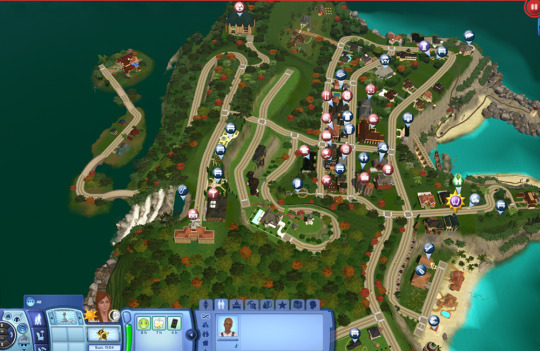

Next, some of the community lots.
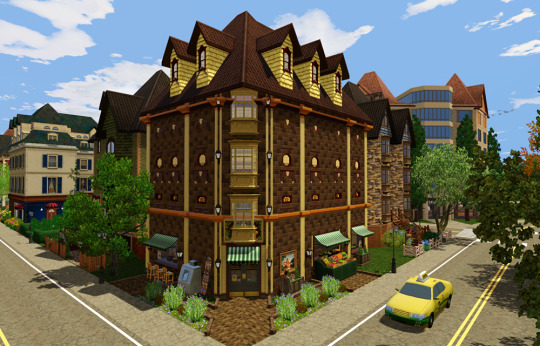

An interesting thing that the creator did is to build overlapping walls around and roofs over the rabbithole buildings, to sort of disguise them and make them blend in better with the surrounding buildings. This is an interesting compromise between rabbithole buildings that just don't fit into a town's theme and the practice of hiding rabbithole buildings in basements. It's a neat idea, I think, and one that that I haven't seen done very often. All of the rabbithole buildings except for the bistro in this world are "disguised" this way.

The cliffside building on the right of this pic is the library. The entire back of the building is two stories of glass, so your sims will have quite the view while they're reading or studying.

This is the drive-in cinema. Apart from parking spaces for cars, grills, and the little decorative ticket booth that you can see, there are two buildings with restrooms and another with a fridge, counters, a coffee machine, and seating. (I'd put a food register in there instead.) There's also a small playground and a dumpster, which I think might be the only one in town. LOL Like I said, the screen isn't an actual screen, but you could maybe rig up something with the big movie screen Store item, if you have it.

This is part of one of the three cliffside parks on the highest terrace in the world, just down the street from the city hall. They're hard to take pics of because they're narrow and have a lot of trees. This one has this bit that juts out over the cliff, though. It has a telescope and a nice view of the town below and the ocean beyond.
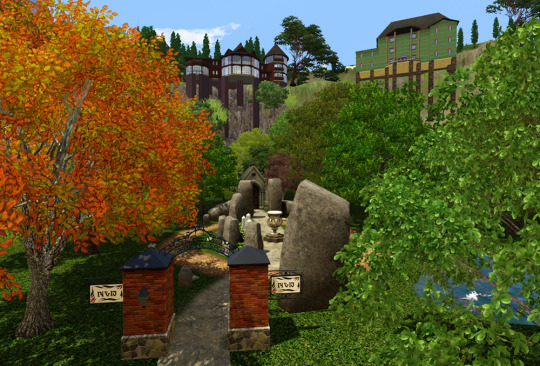
This is the cemetery, which makes use of the henge rock formation and is overlooked by two big cliffside homes.
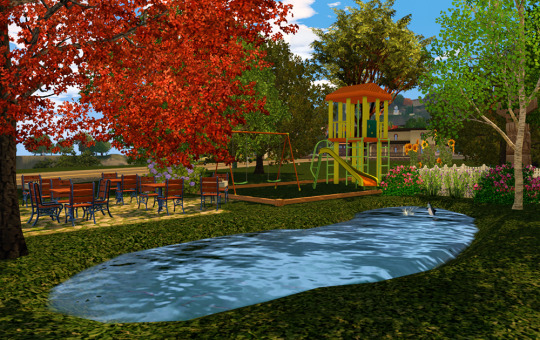
This is one of the small parks in the world. It has a playground, a picnic area with grills, the little fishing pond, and the area to the right surrounded by white picket fence has harvestables in it.

From left to right in this pic, we have the disguised day spa rabbithole and then two of the three-story townhouses typical of the "downtown" area of the world.

The teeny-tiny junkyard is squished between the laundromat on the left (which has three entire empty floors that you could finish with stuff if you wanted to) and a townhouse on the right. Behind is the disguised theater rabbithole.
And there are of course more community lots, but that's enough pics of them. Let's move on to residential lots.

This is the "castle" lot, with a nice porte-cochère. It sits on its own private terrace overlooking the town below.
And here are a bunch of others, from the hilarious little bunker to the grandest of the villas.
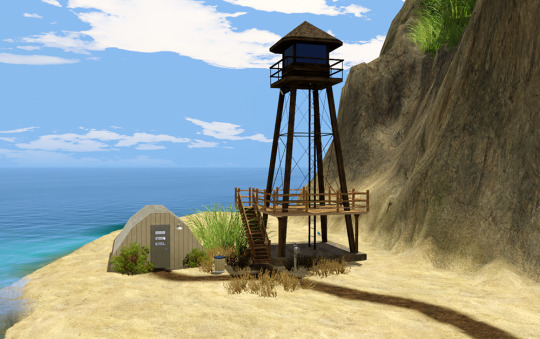






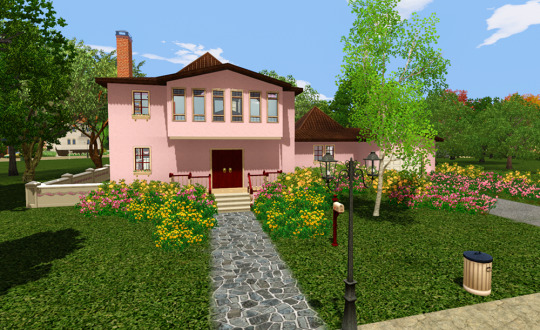


And, here's probably my favorite of the residential lots in the town:

I, as a claustrophobe, can definitely appreciate a three-story-tall tower of windows. LOL
And that's about all I have to say. Nice little town. Small in size but packed with lots that can be dressed up with a little remodeling/updating or left and enjoyed just as-is. I love the terrain sculpting with the multiple terraced levels and the use of rocks, and I appreciate what was done with what, at the time, was limited resources in terms of existing EP/Store content.
I'll leave you with a couple extra scenery pics because it wouldn't be a post from me without a pic of a big-ass moon. :D
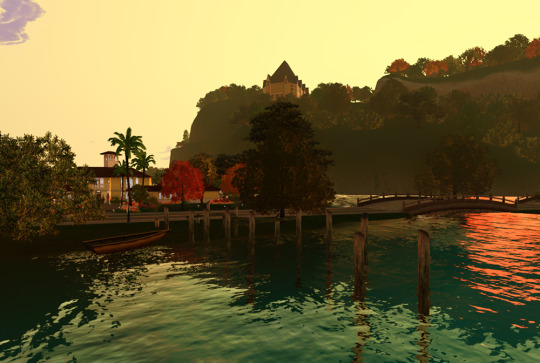

147 notes
·
View notes
Text

𝐤𝐧𝐢𝐟𝐞𝐨𝐯𝐞𝐫𝐡𝐞𝐚𝐫𝐭 / penned by 𝘩𝑜𝑛𝑒𝑦 ( 28, gmt, she/her )

walking through the picturesque streets of cardinal hill, you find zhang 'phoenix' feng (dong sicheng), the 25 year old late night dj at soundwaves originally from seattle, washington. living alongside them in such a small town, you know that they're empathetic and timid, but what you might not know is that they are a witch, and that they’re hiding something…

name: zhang feng / phoenix zhang age: 25 gender & preferred pronouns: male, he/him faceclaim: dong sicheng three positive traits: empathetic, gentle, hardworking three negative traits: naive, timid, repressed
quick intro !
he doesn’t officially have an english name, but his chinese name means ‘phoenix’, so that’s what he goes by (feel free to call him nix as well tbh!!)
his parents emigrated from beijing to seattle in search of a better life and the illusive american dream, but struggled to make ends meet
nix's mother was a promising ballet dancer from a wealthy family back in china, but she gave up her career and lifestyle to move to the us with nix's father, who was from a humble background but determined to make it big
she stayed with him even after a string of failed businesses — until she found out that he was cheating on her
around the same time, she also found out that she was pregnant with phoenix, deciding to keep the baby as a last ditch effort to hold onto her husband
her husband eventually left her, leaving her to raise a child that she never even truly wanted on her own
she was very hard on nix growing up, enrolling him in ballet classes almost as soon as he could walk in an attempt to regain what she'd given up through him
for his part, nix did inherit his mother's talent and won quite a number of accolades as a child, but he felt suffocated by the weight of his mother's expectations
eventually, they had a falling out when nix decided not to pursue ballet professionally after high school; and because he'd never been given the opportunity to have a life outside of ballet, he ended up not going to college at all
he got in his car and just drove — eventually ended up in cardinal hill, where he's lived for the past 6 years
now, he's a late night dj at soundwaves while he tries to figure out who he is outside of his mother's ambition, although sometimes you might find him at the stream studio outside opening hours, retracing his steps from the past and trying to reclaim something he once thought he loved
wanted connections !
someone who first took him in / helped him out when he first arrived at cardinal hill, completely lost and barely able to function independently — beau proctor
owner of the stream studio? while there is a fair bit of trauma attached to it, there is also a part of him that genuinely loves and misses dancing, so he asks to use the dance studio outside of opening hours — can be an arrangement between the two of them, we can plot more about what your muse gets from nix in return — [0/1]
maybe someone who regularly listens to / is a fan of his late night radio segment — [1/?]
someone who gets him out of his comfort zone — maybe they have a tendency to call him out in the middle of the night to explore the woods, or enjoy watching his reaction as he tries new foods — [0/1]
first male crush — he spent most of his childhood and teen years hyper focused on ballet and never really got to do normal things, which is why it'd come as a surprise when he found himself getting nervous and flustered around another man. did anything ever come out of his crush? or did it eventually fizzle out? — corey agnew
cooking buddy — he's taught himself how to cook since moving to cardinal hill, but everything's more fun with a friend. either your muse is terrible at cooking and phoenix teaches them, or they could also be really good at cooking and teach phoenix new dishes — [0/1]
best friend — he's very shy with strangers, but once he gets to know someone, he's a completely different person. your muse has seen sides of nix that no one else has, and he's fiercely loyal (almost to a fault) — [0/1]
3 notes
·
View notes
Video
youtube
Phantom Blade Zero - Announce Trailer
youtube
Chinese version with English subtitles
Phantom Blade Zero is in development for PlayStation 5 and PC (Steam, Epic Games Store). A release date has yet to be announced.
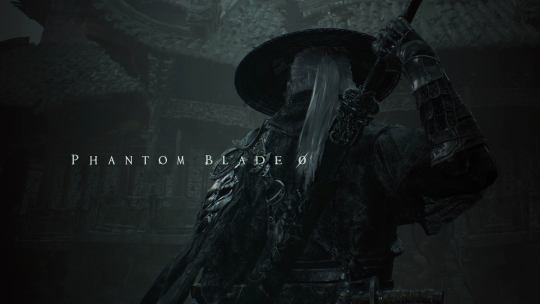
Key visual
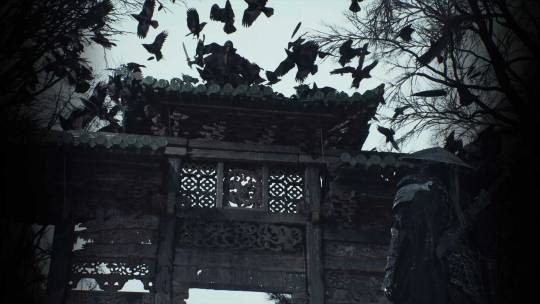
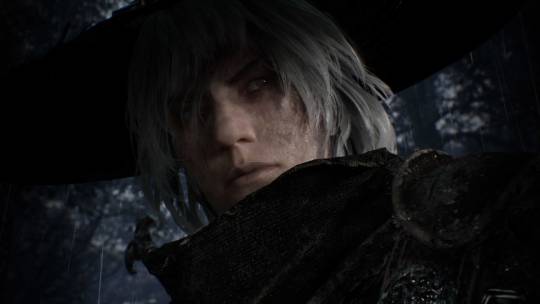

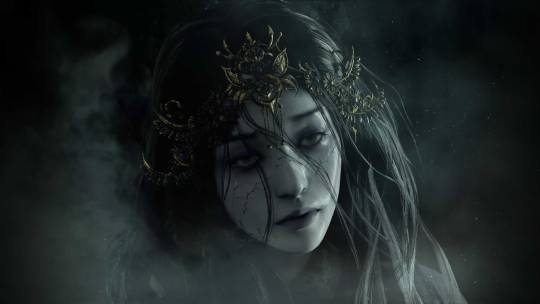
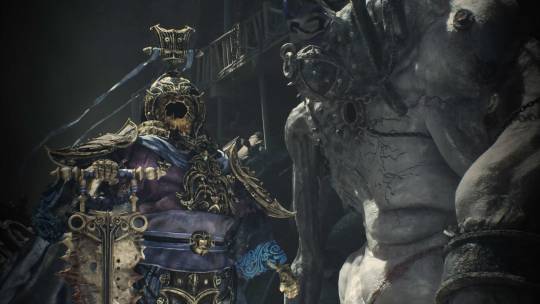




Screenshots
First details via PlayStation Blog
“What’s your plan, knowing you have only 66 days to live?”
This journey began with Rainblood: Town of Death, an indie game I made back in 2010. The development process was a creative outlet for me as an architecture student, first in Beijing and later New Haven.
When I returned to China, I founded my own development studio, S-GAME, and Rainblood grew into a franchise that would later become Phantom Blade. Most of these titles were for smartphones and never released outside of China, but we still managed to build a fan base of over 20 million players.
Now, allow me to introduce Phantom Blade Zero, the spiritual rebirth of the original Rainblood and the game we always wanted to make.
Kung-Fu Punk
Phantom World, the universe in which the game is set, is a place where many kinds of powers converge. Here you’ll find Chinese Kung-Fu, intricate machines reminiscent of steampunk, arts of the occult, and other intriguing elements that don’t quite fit into any of these categories.
In Phantom Blade Zero, you play as Soul, an elite assassin serving an elusive but powerful organization known simply as “The Order.” Soul is framed for the murder of The Order’s patriarch, gravely injured in the ensuing manhunt, and, though his life is saved by a mystic healer, the makeshift cure will only last for 66 days. Now, he must fight against powerful foes and inhuman monstrosities, all while seeking out the mastermind behind it all before his time runs out.
From Louis Cha’s Wuxia stories and Bruce Lee’s films to Michelle Yeoh in Everything Everywhere All at Once and Donnie Yen in John Wick: Chapter 4, Phantom Blade Zero draws on a wide range of martial arts icons, but with a twist of its own. What we call “Kung-Fu Punk” instills a heavy dose of punk spirit and our unique visual aesthetic.
20 notes
·
View notes
Text
Wandering Sword launches September 15
Gemtatsu Source

Wuxia-style RPG Wandering Sword will launch for PC via Steam on September 15, publisher Spiral Up Games and developer The Swordman Studio announced.
Here is an overview of the game, via Spiral Up Games:
About
As a young pugilist, gamers traverse across ancient China to escape enemies. They will meet new acquaintances and forge new friendships. They will go on quests to help the weak and resolve misunderstandings, while strengthening their skills as a martial artist to eventually leave their mark on China’s Wuxia history.
Key Features
Traverse Ancient China Painted in Beautiful Pixel Art – The game is developed in Unreal Engine and uses beautiful pixel art to showcase an open world with bustling ancient Chinese towns, scenic mountains, picturesque rivers, dangerous lairs, treacherous terrains and more.
A Vast Library of Martial Arts Moves and Weapons – As you explore the lands, you will discover hundreds of martial arts forms and weapons to master and wield. You will learn how to cultivate your energy through meridian points and become an expert of both the external and internal forms to gain true mastery of martial prowess.
Innovative Combat System – Combat is conducted on a tiled board and a unique point is that it allows gamers to switch between turn-based mode or real-time mode during combat. The turn-based mode will suit gamers who prefer the traditional way of playing slower paced RPGs while the real-time mode will appeal to players who like to think on their feet and dish out attacks as quickly as their fingers can move.
Realistic NPCs – The NPCs in Wandering Sword are programmed to simulate how actual people would behave in real life. As you traverse the pugilistic world and revisit friends and acquaintances, you will notice that they have been keeping themselves busy too with their own adventures and martial arts practice instead of idling around!
Multiple Endings and Plenty of Quests – Wandering Sword offers great replayability. Different choices you make will lead to different endings for the game. There are also a great number of side quests you can opt to take on besides the main quest, which will provide many hours of adventure time.
Watch a new trailer below, via IGN.
Release Date Trailer
youtube
10 notes
·
View notes
Text
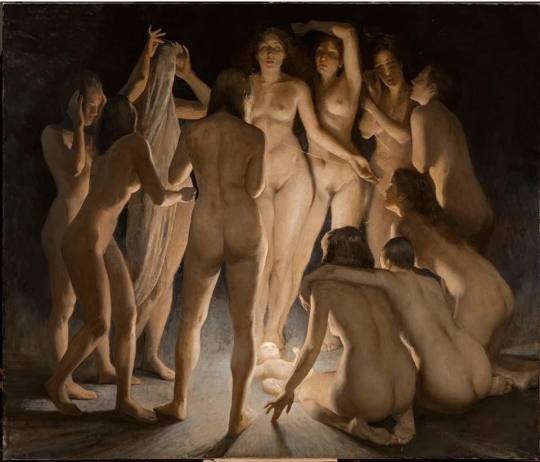
Art promoting
Daniela Astone ( b.1980 Pisa )grew upon in the sea-town of PortoSanto Stefano ,Italy, formally began studying art at the age of 14 in the High School of Arts in Grosseto.
After graduating in 1998 she moved to Florence to study Illustration at the international school of comix, in her second year she started to work indipendently for several editors and in the studio of illustration Inklink.
At the age of 21 Daniela decided to change direction and to re-start studing drawing and paint from life at The Florence Academy of Art under the direction of Daniel Graves.
She began to teach to the younger students in the Academy when she was in her second year , she graduated in 2004 with the end of the year award , but she continued to work as a principal teacher for the Florence Academy of art .
In 2005 she had her first and very successful Solo show at the Ann Long Fine Art Gallery in Charleston so she decided to build up a studio in the Tuscany countryside.
In 2013 Daniela became the director of the intermediate program at The Florence Academy of Art , entered in the BP award in London and recived a honorable mention from the Mod Portrait award,Spain .
Her work has exhibited internationally and in 2016 it became part of the permanent collection of MACS ,the Contemporary Art Museum in Sicily.
She also collaborated with Tiac ,China with Liveandlearn ,Thailand ,with Streamline , East Oaks Studio and teaches workshops of landscape painting in her studio-house in Chianti Tuscany and around the world.
In 2019 together with Gaia Grazioli she curated the Show “Corpo a Corpo” in the Museum of Villa Bardini in Florence thanks to Cassa di Risparmio di Firenze and Carlo Sisi.
5 notes
·
View notes
Text
GJ and ZZH Updates — February 26-March 4
<<< previous week || all posts || following week >>>
This is part of a weekly series collecting updates from and relating to Gong Jun and Zhang Zhehan.
This post is not wholly comprehensive and is intended as an overview, links provided lead to further details. Dates are in accordance with China Standard Time, the organization is chronological. My own biases on some things are reflected here. Anything I include that is not concretely known is indicated as such, and you’re welcome to do your own research and draw your own conclusions as you see fit. Please let me know if you have any questions, comments, concerns, or additions. :)
[Glossary of names and terms] [Masterlist of my posts about the situation with Zhang Zhehan]
02-26 → Gong Jun flew back to Beijing.
02-27 → Fresh posted a photo ad featuring Gong Jun, shortly followed by a promotional video.
→ Madame Tussauds posted a gif that used shots of Gong Jun from The Flaming Heart, Dream Garden, Rising with the Wind, and their own photoshoot with him.
02-28 → 1000th day since Word of Honor filming began.
→ Gong Jun posted a douyin from his trip to Thailand. Caption: “Thailand travel guide” with “guide” (gonglue) written with the gong from his name. BGM is Small Town Summer by LBI利比, one of the songs he sang for his New Year’s Eve performance. Fan Observations: - He’s been including images of trees a lot recently. - A review of the Small Town Summer candy: It’s a song about falling in love in the summer while listening to Jay Chou.
→ Deeyeo posted a teaser image for their upcoming endorsement with Gong Jun. (1129 kadian) Caption: “He can freely switch between different roles, and he has made breakthroughs in various challenges[.] 9:00 on March 2, stay tuned!”
03-01 → At midnight in all timezones, Zhang Zhehan’s music released by Xinxi (ie. the Light and Another Me albums) were removed from Spotify, iTunes, and Amazon Music. It was noticed soon after that these songs had also been moved from YoYo Rock’s main YouTube channel to their indie channel, where they were unlisted but at that time could be found through a public playlist. Fan Observations: - The scammers and whalers were all silent on the topic, suggesting that this was not their doing, if it was CAPA’s doing it should have happened long ago, and if it was a matter of contracts expiring it’s surprising that both albums would be affected at once. - The most likely explanation at the time of this post is that either Zhang Zhehan or Xinxi specifically requested for the songs to be removed, Zhang Zhehan being more probable as Xinxi’s main concern would be the revenue gained from the songs still being up. - The purpose of having Zhang Zhehan’s old songs in the same place as the new stolen ones is to give the new songs the impression of legitimacy, so taking them down counters that. [full breakdown of the above points] - The fact that YoYo Rock moved and unlisted them was likely to try to avoid copyright claims. It’s possible that this was in response to a cease and desist. Addition 03-05: [breakdown about the YoYo Rock videos]
→ Gong Jun’s studio posted his schedule for March: magazine shoots on 03-02 and 03-05, event on 03-04. Caption: “Spring is blooming, the sky is clear and the air is fresh! Boss @ Gong Jun Simon's March itinerary is coming, the new month is full of energy!” BGM is 春之行 by 灰澈. Fans left comments en masse on the post asking the studio to take action against recent anti activity.
→ Deeyeo posted a teaser of their commercial with Gong Jun that would release the following day. (1129 kadian)
→ Gong Jun posted three photos of himself with a dog to his Xiao Hong Shu, advertising Tangle Teezer’s pet brush. (14:06, 1640 kadian) Tangle Teezer later posted a behind the scenes video of the photoshoot.
→ Madame Tussauds posted a video of their photoshoot with Gong Jun. Fan Observations: - In the video, he signs a book with the date 2021-07 (exact date cut). This led to speculation of if it was originally intended for there to be matching wax models of both Gong Jun and Zhang Zhehan. - It was noted that on 2021-05-10, Zhang Zhehan wore a very similar white suit by the same brand as the one Gong Jun wore for the Madame Tussauds photoshoot.
03-02 → Gong Jun posted the full commercial he did for Deeyeo, formally announcing his endorsement with them. This was reposted by his studio and Deeyeo. Deeyeo also posted a photo ad and a promotional video with the announcement.
→ 361° posted two photo ads featuring Gong Jun. (1129 kadian) Fan Observation: The blue jacket is called 云舒防晒衣, with 云舒 being the same as in the Word of Honor line “Take a lover’s hand, and watch the clouds unfold,” referencing Zhou Zishu’s name (episode 25).
→ Zhang Sanjian appeared briefly at an airport in a paparazzi livestream accompanied by Xie Yihua, wearing baggy clothing, a hat, glasses, and a mask. No one said his name.
→ The unlisted YoYo Rock videos were found to have been privated.
→ Madame Tussauds posted nine old photos of Gong Jun.
03-03 → Deeyeo posted a photo ad featuring Gong Jun.
→ Gong Jun posted sixteen photos from his trip to Thailand with a caption playing on the lyric “You know you don’t know (你知不知道 不知道)” replacing “buzhidao” with “pujidao” (Phuket Island). He also posted the photos to his Xiao Hong Shu, caption: “I didn’t have fun! As if 🤭” and Instagram, caption: “Happy Time !” (11:17, 511 kadian) Fan Observation: Possible ring sighting in the first photo.
→ Gong Jun’s studio posted an additional nine photos of the Thailand trip. Caption: “Green trees by the sea, resting along the road, please check the travel postcards from boss @ Gong Jun Simon.”

→ Gong Jun’s 2017 drama Advance Bravely became available for streaming on Viki.
→ Gong Jun liked two videos on Douyin, one about a dog who “wants to love you unconditionally” and another of an older woman talking about how having a good husband made a hard life easier. It was noted that the date had three 3s in it, Zhang Zhehan’s favourite number.
03-04 → Tangle Teezer posted a promotional video spoken by Gong Jun. (1129 kadian)
→ Madame Tussauds made a post announcing that the unveiling of Gong Jun’s statue would be shown on a livestream that afternoon.
→ Deeyeo posted a short Q&A video with Gong Jun. [subbed video] Fan Observation: When asked which of his past roles he’s most similar to he said Yuan Che from Love Lost in Times. Yuan Che’s most notable characteristics are that he’s extremely loyal, and that he waited a long time for his love interest to return.
→ A livestream was streamed showing Gong Jun touring Madame Tussauds, then the unveiling ceremony. (full recording in above link) Fan Observations / Highlights: - It was emphasized that new technology was used to make the figure feel more lifelike. Guests are allowed to touch it. [subbed clip] - Gong Jun commented that the fingernails are too long, he keeps his shorter. (The hands look very off in general tbh.) [clip] He also made a lot of comments about his abs lol. - When talking about being approached to make the statue, he said “approached us”, and when he was addressing someone with the surname Zhang he said “Zhang-lao— Zhang... Zhang-zong” [clips] - Many noted that the pose looks as if it was meant to have someone else standing beside it, with people comparing it to the Tom Ford event specifically.
→ Gong Jun’s studio posted nine photos of Gong Jun touring Madame Tussauds. Caption: “No time to explain the new style of aesthetics at the beginning, and boss @ Gong Jun Simon uses a different fashion attitude to create a modern new force.”
→ Gong Jun’s studio posted six photos from the unveiling. Caption: “Through the modern tunnel, boss @ Gong Jun Simon and ‘Second Jun’ appeared at Madame Tussauds Shanghai, weaving fashion trends with original colors.”
→ Madame Tussauds posted another six photos from that day. They also posted additonal photos and a making-of video to their WeChat.
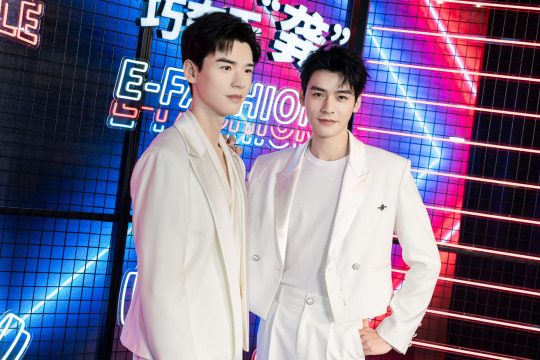
Addition 03-05: ONOFFON Collection made a post highlighting their jacket that Gong Jun had worn to the event.
Additional Reading: → Flora’s daily fan news → My own observation: The Instagram was unusually inactive this week.
<<< previous week || all posts || following week >>>
This post was last edited 2023-03-05.
#There is (a tiny bit of possible) news about zzh!#Also a lot of candy#some of it painful#Zhang Zhehan#Gong Jun#Word of Honor#woh cast#lld timeline
18 notes
·
View notes
Text
The 5 best animated movies on Netflix
Bee Movie (2007)
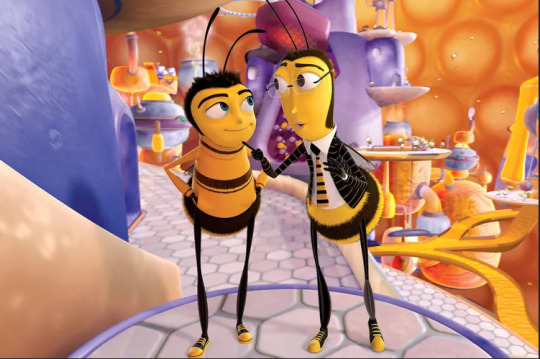
EW grade: A– (read the review)
Directors: Simon J. Smith and Steve Hickner
Cast: Jerry Seinfeld, Renée Zellweger, Matthew Broderick, John Goodman, Patrick Warburton, Chris Rock
Lights, camera, VPNaction! Elevate your movie nights with NordVPN. 🎥🔒secure your connection and Download NordVPN . Click now to unlock global cinematic thrills!
From the twisted mind of Jerry Seinfeld came this oddball DreamWorks comedy about a talking bee (also voiced by Seinfeld) who is outraged by the exploitation of his species for honey and decides to sue the human race. Along the way, he also sort of falls in love with a human florist (Renée Zellweger). Despite (because of?) its wild premise, Bee Movie gets at some potent messaging about workers' rights and the differences between individualism and collectivism. In other words, as EW's critic noted, it's "nutty, ecological, antically funny, and moving, all at the same time." The film has subsequently inspired a surprising number of memes, adding to its bizarro lore.
Wallace & Gromit: The Curse of the Were-Rabbit (2005)
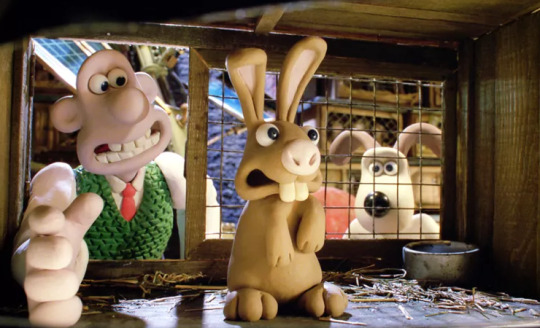
EW grade: N/A (read the review)
Directors: Nick Park and Steve Box
Cast: Peter Sallis, Ralph Fiennes, Helena Bonham Carter
Following the success of their universally acclaimed shorts, Aardman Animations brought Wallace and Gromit to the big screen for this humorous tale in which the eccentric inventor and his loyal dog are tasked with hunting down a rabbit who's been eating the town's crop of vegetables. But this proves easier said than done, as the pair realizes that the dreaded Were-Rabbit may be closer to home than they suspected. Packed with the studio's trademark British wit, and lovingly crafted with stop-motion claymation, the Oscar-winning film is a total delight. As EW's critic wrote, "The Curse of the Were-Rabbit bestows generous blessings on all that's good in Englishness, in moviedom, and, of course, in cheese.
Kung Fu Panda (2008)
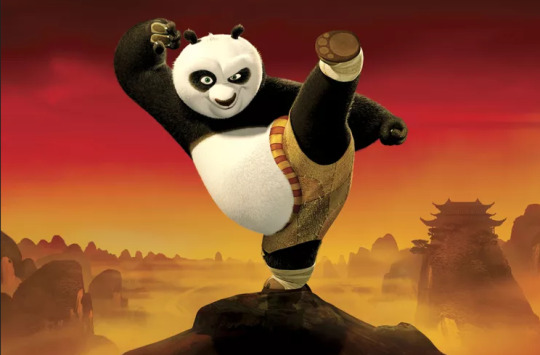
EW grade: A– (read the review)
Directors: John Stevenson and Mark Osborne
Cast: Jack Black, Dustin Hoffman, Angelina Jolie, Ian McShane, Seth Rogen, Lucy Liu, David Cross, Randall Duk Kim, Jackie Chan
Lights, camera, VPNaction! Elevate your movie nights with NordVPN. 🎥🔒secure your connection and Download NordVPN . Click now to unlock global cinematic thrills!
Kung Fu Panda may have a gimmicky title, but the sincerity of its storytelling is as effective as any DreamWorks animation released to date. Giant panda Po (Jack Black) is a humble restauranteur living in Ancient China who idolizes a quintet of kung fu masters known as the Furious Five. His dreams become a rude awakening when he stumbles his way into becoming the prophesized Dragon Warrior, and tasked with fighting off a vengeful snow leopard who wishes to obtain the all-powerful Dragon Scroll. Featuring vibrant animation and colorful voice performances from Black, Jackie Chan, Seth Rogen, and more, Kung Fu Panda delights in slapstick comedy while also delivering its timeless message in unique fashion. As EW's critic put it, "Just about all animated movies teach you to Believe in Yourself…but the image of a face-stuffing panda-turned-yowling Bruce Lee dervish is as unlikely, and touching, an advertisement for that message as we've seen in quite some time.
The Adventures of Tintin (2011)

EW grade: C (read the review)
Director: Steven Spielberg
Cast: Jamie Bell, Andy Serkis, Daniel Craig
Lights, camera, VPNaction! Elevate your movie nights with NordVPN. 🎥🔒secure your connection and Download NordVPN . Click now to unlock global cinematic thrills!
Bringing The Adventures of Tintin to life was decades in the making for director Steven Spielberg, who once referred to the comic book series as "Indiana Jones for kids." The action is set in 1950s Belgium as the inquisitive journalist Tintin (Jamie Bell) purchases a miniature model of a ship called the Unicorn, setting in motion a chaotic series of events that leads to him being kidnapped by a villainous ship collector. On board, he meets Capt. Archibald Haddock (Andy Serkis), whose ancestor was the captain of the real-life Unicorn. Bursting with a high-energy sense of adventure, Tintin is indeed a fun starter pack to the thrilling escapades of Indiana Jones, with dazzling CG animation that uses elements of motion capture. The film won the Golden Globe for Best Animated Feature, and earned yet another Oscar nomination for John Williams for his original score.
Nimona (2023)
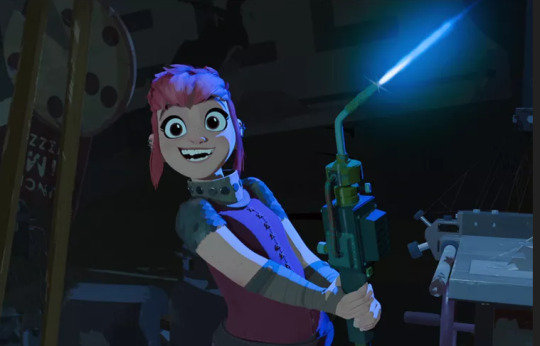
EW grade: B+ (read the review)
Directors: Nick Bruno and Troy Quane
Cast: Chloë Grace Moretz, Riz Ahmed, Eugene Lee Yang, Frances Conroy, Lorraine Toussaint, Beck Bennett, RuPaul, Indya Moore, Julio Torres, Sarah Sherman
Lights, camera, VPNaction! Elevate your movie nights with NordVPN. 🎥🔒secure your connection and Download NordVPN . Click now to unlock global cinematic thrills!
Blending medieval folklore and futuristic fantasy, this high-spirited adaptation of the 2015 graphic novel is more timely now than ever. Chloë Grace Moretz gives voice to Nimona, a mischievous shapeshifter who comes to the aid of Ballister Boldheart (Riz Ahmed), a knight who has since been ostracized by the kingdom due to his background as a commoner. Naturally, Nimona has her own history with being outcast, and the pair unravel a conspiracy that resulted in the queen's death. Featuring a powerful queer allegory, both Nimona and Ballister try to overcome prejudice from their community while forging a bond due to their circumstances. As EW's critic wrote, "The story admiringly delves into how such monsters are in fact created by a society that refuses to accept their differences." —Kevin Jacobsen
2 notes
·
View notes
Text
Animation Night 149: Toei
Hi there. It’s Thursday. You know what that means (yes, it means i’m freeeeee)
Today we will be rolling back to some of the earliest days of anime!
The story of Toei goes back to 1946. In the immediate aftermath of WWII, there were very few games in town when it came to Japanese animation (or, to be fair, animation in most places). During the war, animators had been recruited to make propaganda films such as Momotaro: Sacred Sailors, among them Akira Daikuhara.
In the immediate aftermath, Kenzō Masoaka (of Benkei tai Ushiwaka, for anyone who remembers AN24) began the first effort to make an animated film post-war. This film was titled Sakura: Haru no genso (Cherry Blossom: Spring’s Fantasy); it was followed by a series of three films about a cat called Tora-Chan. But Masoaka’s studio struggled, constantly closing and re-opening. At the time it was operating under the name 日本動画映画 Nihon Dōga Eiga or Japan Animated Films, or just the abbreviation 日動映画 Nichidō Eiga. In 1956, they were bought by live action studio Toei (itself approaching 20 years old, founded in 1938) and renamed to Toei Dōga, where they started making increasingly elaborate animated films.
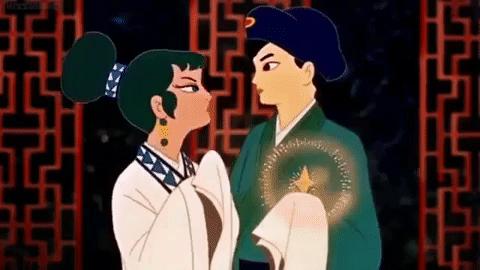
Toei of this era was sometimes called the rather patronising name ‘Disney of the East’. There is some truth to it, in that their ambition, especially in the early years, was certainly to make animated films as elaborate as those of old Walt. Their first feature was 白蛇伝 Hakujaden (1958), based on a Song Dynasty Chinese legend about a lost pet snake who transforms into a woman in the hopes of reuniting with her former owner, a monk who thinks that’s sus, and two pandas who try to sort it all out; in English it’s variously translated as The White Snake Enchantress, Legend of the White Serpent or even Panda and the Magic Serpent.
Part of the goal of the film, to Toei Dōga president Hiroshi Ōkawa, was a gesture of reconciliation towards China after the whole ‘invading and occupying’ thing.
The film was Rintarō’s first animation job; it also left a massive impression on a young Hayao Miyazaki, who wrote the following in Gekkan ehon bessatsu: Animēshon (1979), trans. Beth Cary and Frederik L Schodt in Starting Point:
What I’m saying here is that when young people feel attracted to the heroes of a tragedy [context: such as The Diary of Anne Frank], whether in animation or other media, a type of narcissism is really involved; this attraction they feel is a surrogate emotion for something they have lost.
From personal experience, I can say that I first fell in love with animation when I saw Hakujaden, the animated feature produced by Toei Animation in 1958. I can still remember the pangs of emotion I felt at the sight of the incredibly beautiful, young female character Bai-Niang, and how I went to see the film over and over as a result. It was like being in love, and Bai-Niang became a surrogate girlfriend for me at a time when I had none.
It is in this sense that I think we can achieve a type of satisfaction, by substituting something for the unfulfilled portion of our lives.
The feelings evoked by Bai-Niang may go some way to explaining the role of similar girls in Miyazaki’s movies...
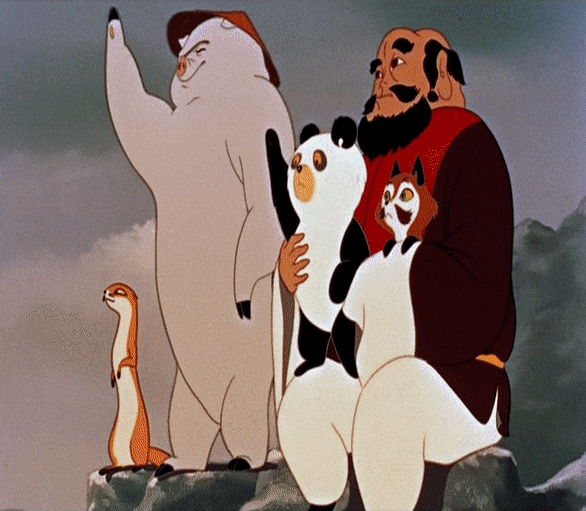
Hakujaden has some curious properties as a work of animation. It was, especially for the time, astonishingly elaborate and straining the technical capabilities of the industry (although the claim on Wikipedia that it had 13,590 staff seems rather dubious lmao). The drawing count is stratospheric thanks most scenes being animated on ones and twos - the opposite of the limited animation techniques that anime would later perfect. Despite that, it is also the work of an inexperienced team, and compared to later works its animation can feel awkwardly timed, the flood of inbetweens turning everything to mush.
Nevertheless, there are two stars of the show in terms of animation. One is Yasuji Mori, who would later be one of Toei’s star animators, creating scenes such as the dance at the beginning of this post - as well as teaching Miyazaki after he joined Toei. The other is Akira Daikuhara, who was way ahead of the game on effects animation, creating the film’s transformation sequences. Daikuhara would go on to be one of Toei’s main animators of human characters, while Mori tended to take the animal/mascots; he has been a relatively forgotten figure, although that’s starting to change with articles like these ones by Matteo Watzky, whose research just digs deeper and deeper.
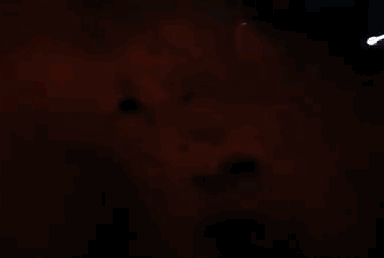
Toei’s early films tend to follow the precedent set in Hakujaden, adapting folktales from (mostly) China and Japan. In 1959 they covered a Japanese story in Shōnen Sarutobi Sasuke; 1960, they took on Saiyūki (Journey to the West); then Anju to Zushiōmaru (The Orphan Brother, 1961) and Arabian Nights: The Adventures of Sinbad (1962).
In this period of Toei, there was a lot of ambition, and also a feeling of inadequacy compared to the elaborate animated films being made in other countries. Hayao Miyazaki, who joined Toei in the 1963, wrote in 1982:
I used to create feature-length works for Toei Animation, but compared to the works just mentioned, they were obviously far inferior, at least technically. Sort of like showing rabbits slipping and falling, that sort of thing. We wondered if we would ever catch up to the level of what was being done in America, France or Russia, or if it were even possible to do so. Frankly, we really didn’t know.
To begin with, we didn’t even know what we had to do to reach the same level of excellent as the best works out there. We knew we had constraints, such as short production schedules, small budgets and so forth, but above and beyond that, we began to develop an inferiority complex: we wondered if we even had the basic talent needed to proceed. In retrospect, the only thing that probably kept us going, and drove us to pursue such a long-term goal, was our determination.
Miyazaki’s words should be taken with a grain of salt, since they definitely suit his personal myth-making. Still, conditions at Toei in the 60s were rough, leading to the first major unionisation struggle of anime history, which I wrote about in AN70. The studio started bringing on part-timers paid hourly rather than a salary, and created severe pay discrepancies, which were met with strikes and departures from the studio. Saiyūki took such a tole on its director Taiji Yabushita that he was hospitalised; Yasuji Mori would later create the term ‘anime syndrome’ for this sort of overwork because it was not the last time by any means.
However, I’m going to zoom over all of these to get to the わんぱく王子の大蛇退治 Wanpaku Ōji no Orochi Taiji (The Naughty Prince’s Orōchi Slaying, more commonly translated The Little Prince and the Eight-Headed Dragon) in 1963 - not because it’s necessarily more important, although it’s remembered as one Toei’s best films, but because I happen to have a fantastic analysis of one of its key scenes on hand thanks to AniObsesive and Toadette.
youtube
Wanpaku Ōji breaks from precedent in many ways, particularly its visual design, which takes on highly simplified shapes reminiscent of the then ultra-modern UPA style by way of haniwa figures. The story at least follows the pattern, adapting a Shinto myth in which the storm god Susanoo battles (guess what) an eight-headed dragon Yamat no Orochi. Susanoo is motivated by the death of his mother Izanami, and goes on a journey to try to find her, which leads him to the village of Princess Kushinada - a village with a dragon problem, which they’ve kept at bay only by sacrificing Kushinada’s seven sisters. Susanoo, horny for a princess who looks like his mum, decides it’s time to intervene.
The dance scene above comes in the middle of the movie, in which the goddess Ame-no-Uzume performs an increasingly mystical dance. It was an ambitious experiment of Makoto Nagasawa, who had joined as an inbetweener on Saiyūki, with large spacing and broad motion to create a snappy feeling. Animation Obsessive writes:
Typical motion at Toei, Nagasawa said, would be “neatly in-betweened from the first [key] pose to the last [key] pose.” In other words, in-betweens smoothed out the movement and made it longer, more complete and more realistic. By contrast, Nagasawa’s drawings of Uzume are often at wide intervals, with minimal in-betweens. Sometimes, she basically teleports from one frame to the next.
Even when the intervals aren’t that wide, the way Uzume moves remains big, broad, clear and non-real. Nagasawa pushes her gestures, increases her speed, shows us only what he wants to show us. The action is crisp, always holding its abstract shape. No naturalistic touches distract from the core form of what Uzume does.
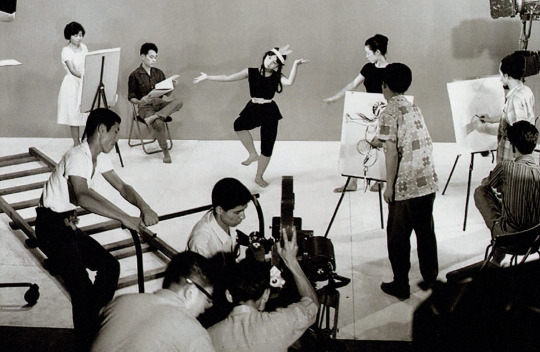
Alongside Nagasawa, Yasuji Mori was now coming into a role close to that of the now-standard 作画監督 sakuga kantoku aka sakkan or animation director, an experienced artist whose job is to correct the drawings from many different key animators to keep them on-model. Modern anime productions tend to have a strictly hierarchical approach where the characters are designed by one or a few character designers, usually also the lead sakkan. At Toei, things had been a bit more fluid - the individual animators would often design the characters they were going to animate, with a division of labour closer to the old Disney style. On this film, it became more of a hybrid: Mori drew the final model sheets, but the animators would submit suggested designs to him.
For the most elaborate scenes, such as the dance, they went to great lengths to record a suitable score and record live-action footage with professional ballet dancers. I encourage you to read the AniObsessive article for the details.
At the time of Wanpaku Ōji, Toei was starting to face competition. The already-renowned mangaka Osamu Tezuka had founded MushiPro, which was rapidly taking over TV, and the sphere of TMS satellite studios were starting to get going and siphon away many of their best people such as Yasuo Ōtsuka. Still, the animators at Toei were determined to try and stand alongside international animators:
The team was well aware of the trends in world animation at that time. According to Nagasawa, they were watching work from Canada (Norman McLaren), Czechoslovakia (Jiří Trnka), Russia (The Snow Queen), France (The King and the Mockingbird) and so on. It was all bold, new animation. In The Little Prince, Toei took up the challenge this work presented, without simply copying it. The team contributed to modern animation while staying rooted in the ancient, and in Japan itself.
Subsequently, Japanese animation is sometimes divided into a ‘Toei tradition’ vs. a ‘MushiPro tradition’, of full vs limited animation respectively, followed by the various successors such as Ghibli on the one hand and Madhouse on the other. As ever this is not really very accurate, and both ‘lineages’ crossed over extensively (just look at Kanada).
Toei’s own output adapted to the times. Takahata’s Horus: Prince of the Sun (AN 70) might be the last of the ambitious movies in their old style; after this, the fairytale films were gradually replaced by gekiga animation such as Tiger Mask, super robots like Mazinger Z, and then at the end of the 70s increasingly science fiction adaptations of Leiji Matsumoto’s works (AN 146). In the 80s, shōnen exploded onto the scene and Toei made a lot of Dragon Ball and Saint Seiya, later joined by other franchises like PreCure, Digimon and One Piece. So Toei remains one of the largest and most robust animation studios in Japan. They’ve got a lot of salaried staff, a union(!), and regular work in the form of wildly popular franchises. But occasionally they’ll make something cool and weird within that remit, like Hosoda’s One Piece film (AN61), Kyōsōgiga (AN98) - or Interstella 5555 which we watched last week.
So! Tonight though we’re going to go back and look at those ambitious early days, where it started, with snakes and dragons and a bishōjo who’s 美 enough to inspire the entire career of Hayao Miyazaki. Animation Night 149 will begin at 20:00 UK time (UTC), (13:00 California time), at twitch.tv/canmom - hope to see you there!
And next week I have a serious treat for you, because the Inu-Oh BD finally dropped. Can’t think of something more perfect for #150 than returning to Masaaki Yuasa.
And now to spend the rest of the day until 8pm on intensive gamdev 😵💫
9 notes
·
View notes
Text
Events 2.20 (after 1940)
1942 – World War II: Lieutenant Edward O'Hare becomes America's first World War II flying ace. 1943 – World War II: American movie studio executives agree to allow the Office of War Information to censor movies. 1943 – The Saturday Evening Post publishes the first of Norman Rockwell's Four Freedoms in support of United States President Franklin Roosevelt's 1941 State of the Union address theme of Four Freedoms. 1944 – World War II: The "Big Week" began with American bomber raids on German aircraft manufacturing centers. 1944 – World War II: The United States takes Eniwetok Atoll. 1952 – Emmett Ashford becomes the first African-American umpire in organized baseball by being authorized to be a substitute umpire in the Southwestern International League. 1956 – The United States Merchant Marine Academy becomes a permanent Service Academy. 1959 – The Avro Arrow program to design and manufacture supersonic jet fighters in Canada is cancelled by the Diefenbaker government amid much political debate. 1962 – Mercury program: While aboard Friendship 7, John Glenn becomes the first American to orbit the Earth, making three orbits in four hours, 55 minutes. 1965 – Ranger 8 crashes into the Moon after a successful mission of photographing possible landing sites for the Apollo program astronauts. 1968 – The China Academy of Space Technology, China's main arm for the research, development, and creation of space satellites, is established in Beijing. 1971 – The United States Emergency Broadcast System is accidentally activated in an erroneous national alert. 1979 – An earthquake cracks open the Sinila volcanic crater on the Dieng Plateau, releasing poisonous H2S gas and killing 149 villagers in the Indonesian province of Central Java. 1986 – The Soviet Union launches its Mir spacecraft. Remaining in orbit for 15 years, it is occupied for ten of those years. 1988 – The Nagorno-Karabakh Autonomous Oblast votes to secede from Azerbaijan and join Armenia, triggering the First Nagorno-Karabakh War. 1991 – In the Albanian capital Tirana, a gigantic statue of Albania's long-time leader, Enver Hoxha, is brought down by mobs of angry protesters. 1998 – American figure skater Tara Lipinski, at the age of 15, becomes the youngest Olympic figure skating gold-medalist at the 1998 Winter Olympics in Nagano, Japan. 2003 – During a Great White concert in West Warwick, Rhode Island, a pyrotechnics display sets the Station nightclub ablaze, killing 100 and injuring over 200 others. 2005 – Spain becomes the first country to vote in a referendum on ratification of the proposed Constitution of the European Union, passing it by a substantial margin, but on a low turnout. 2009 – Two Tamil Tigers aircraft packed with C4 explosives en route to the national airforce headquarters are shot down by the Sri Lankan military before reaching their target, in a kamikaze style attack. 2010 – In Madeira Island, Portugal, heavy rain causes floods and mudslides, resulting in at least 43 deaths, in the worst disaster in the history of the archipelago. 2014 – Dozens of Euromaidan anti-government protesters died in Ukraine's capital Kyiv, many reportedly killed by snipers. 2015 – Two trains collide in the Swiss town of Rafz resulting in as many as 49 people injured and Swiss Federal Railways cancelling some services. 2016 – Six people are killed and two injured in multiple shooting incidents in Kalamazoo County, Michigan.
1 note
·
View note
Text
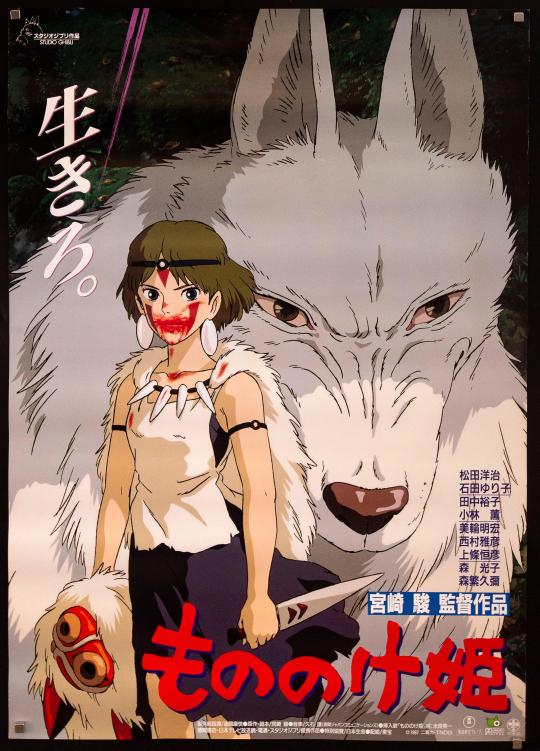
Studio Ghibli Reviews: Princess Mononoke (1997)
A certified epic and one of the most powerful animated films of all time; the development of Princess Mononoke was no less epic, having an almost 20-year history and creation. Considered by many a spiritual successor (and to some, a better version of) Nausicaä of the Valley of the Wind, Hayao Miyazaki was compelled by world events to bring forth a tale that weaves the themes of environmental preservation & destruction, the futility of war, conflicting views of spirituality, and the value of finding beauty in an unforgiving world.
Plot: During a fancifully-depicted time in Muromachi Era Japan, Prince Ashitaka is sent into exile by his Emishi elders after being cursed by a stampeding demon. His quest becomes a journey of discovery - "to see with eyes unclouded by hate" - as he traces the source of the demon's fury to the metal-furnaces and gun manufacture of Iron Town. This community was created by Lady Eboshi, a warrior-ruler and defection of the Imperial authority, who seeks to rid the area of its surrounding forest and its spirit denizens. Of these is the so-called "Princess Mononoke": a young woman named San who was raised by wolf-gods and has frequently come into conflict with the residents of Iron Town for their destruction to the forest. Ashitaka becomes swallowed up in this great conflict, hoping that humanity can live with the spirits and the forest in peace, and prevent the uncoming war that will determine the fate of the world.
- this review will be mainly spoiler-free -
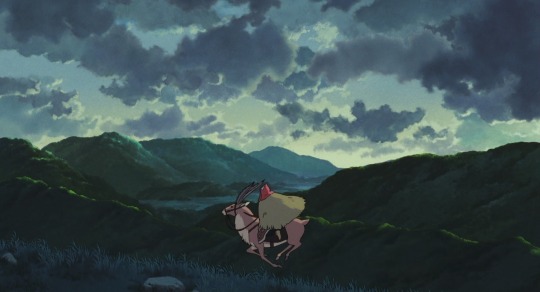
I think this film is a masterpiece. It is so raw and honest in its messaging and presentation and I find it so commendable for that. The world that is on display here is so detailed and lived-in and I always feel like I'm there whenever I give this a rewatch. Of course, the setting is as realistically depicted as possible: one has to remember that the setting is, by and large, based in actual Japanese history. The Emishi were a real people (though their ethnicity is still debated by scholars, a common hypothesis is that they were some of the last of Japan's original inhabitants as the Ainu are today) and they really did struggle against the incoming Yamato peoples. The guns which Lady Eboshi valued so heavily were imports from China, showing real long-distance connections that shaped the archipelago during Post Classical times. Much of Japan was originally covered in forest and full of large animals like wolves (no apes though). Etc etc. And yet the fantasy elements - with spirits and demons and talking animals - feel grounded amidst all this realism.
The story itself is treated like an ancient epic and like many of those authorless tales there is a timelessness to it. As the environmental crisis takes hold and pressures the world into a sorry state, I can't help but feel a strong connection the the subject matter. I empathize strongly with Ashitaka's wish for coexistence between humans and the overarching environment, as our species was shaped by it and actively shaped it for tens to hundreds of thousands of years. We need nature and right now nature almost certainly needs us.
As a character, Ashitaka borders the extremes of our other two main leads. San, the "Spirit Princess", hates humans and takes delight in the thought of their downfall, and she sympathizes strongly with the other animals and spirits with whom she can communicate. Lady Eboshi wishes to be rid of the forest and clear it so that her metallurgists and followers can thrive, and this is exemplified in the core conflict of the film: she wishes to kill off the Great Spirit of the Forest to aid in her goals. Obviously, the extremes of "killing humans to protect the environment" and "killing the environment to protect (and prosper) humans" are foolish. There is no justifications for these actions when it comes to conservation and they are both actively harmful views that mask a wider complexity in human-ecosystem interactions. And how the film handles this conflict is exquisitely done.

As characters themselves, Ashitaka, San, and Lady Eboshi are fantastic leads with all their own charms. The Emishi Prince is calm, reserved, and respectful, and he carries himself with grace and dignity. He's brave and kind (and honestly one of the best male role models you could ask for in a Studio Ghibli film if you want to talk about positive masculinity). San is a free-spirit with a ruthless attitude, and it's difficult not to sympathize with her situation. Having been abandoned by humanity and seeing the harm done by the spread of industrialization to her family and community, she internalizes that and projects it into anger and direct action. But, ultimately, when the situation calls, she reveals her own humanity under her wolf-exterior. Lady Eboshi is - to echo others - one of the best antagonists in film (or at least, in animated film). She is a complex character with a cunning and refined air who knows what she wants and actively works to achieve it. It's this complexity which pressures the viewer to reconsider their thoughts about her as the film progresses: yes, she is essentially a warmonger who is not afraid to smear her enemies' blood beneath her sandals, but she also shows deep compassion for the downtrodden, as seen in her rescuing and recruiting of prostitutes and lepers into her society. In Iron Town, these people are treated as human where otherwise they would be detritus, and so when we watch the townspeople interact with her, we can see their love and devotion to this figure and understand why.
Surprisingly for a Studio Ghibli film, the rest of the cast has fairly smaller parts save for Jiko-bō (or Jigo), a mysterious monk who meets Ashitaka early in his journey and has his own goals in mind regarding the Spirit of the Forest. He comes off as matter-of-fact and friendly enough but then as the film goes on you see his hidden side. I never know how I feel about this character: he's not my favorite but he provides an interesting contrast to Lady Eboshi. The various people of Iron Town also feature as minor characters, including one of the former-prostitutes Toki and her husband Kohroku, who provide more of the comic-relief, and Lady Eboshi's guard Gonza, who's there to be loud and angry and threatening but really the only thing I think about him is that his head looks like a nutsack.
Of course, I can't neglect to mention the spirit characters themselves. San's family includes a 300-year-old giant wolf-god named Moro and her two cubs (who I believe are unnamed in the film). The wolves are a force of nature themselves and Moro in particular has such a presence in the film that I can't help but get chills with. Wild boar gods also feature, including their giant blind leader Okkoto. I can't help but get entelodont vibes from how he and the boars are depicted, even though we now know those extinct animals weren't related to pigs. There are also another entry into the "Studio Ghibli Mascots" club: the kodama, who are these little white tree-spirits that we see throughout the film. They are an interesting mix of cute and creepy (but I think they're more the former than the latter, just funny little dudes). Ashitaka has a "red elk" companion which he rides named Yakul that doesn't speak but is a very nice animal friend. Though, he's more like a reduncine antelope than an elk, but I'm a zoology nerd so I can't help myself.

Our English Dub voice cast is (what else is new?) very well done and includes a couple really stellar performances in my opinion. Ashitaka is voiced by Billy Crudup who I am otherwise unfamiliar with, and out of the entire cast I find I have difficulty thinking how I feel about his voice work here; on the one hand, his tone of voice and lack of any dramatic inflections match the reserved and princely nature of the character, but on the other hand, I can't help but wish for a little more emotion in some of his deliveries. I don't really let this get to me much, though, and it never impacts my overall thoughts of the film. San is voiced by Claire Danes (another actor I am unfamiliar with) and she provides a rather feral and almost southern tone to the character that I feel matches well. I don't understand why some reviewers call her "whiny", because she never comes across like that at all. Lady Eboshi is given a stunning and chilling performance by Minnie Driver, who brings out all the beauty and venom of such a powerful woman. She's probably my performance in the film. Gillian Anderson, likewise, gives an equally amazing voice to Moro and her kindred spirit Okkoto is voiced by Keith David (who I guess did have "friends on the other side"). Billy Bob Thornton plays Jigo and really rounds out that character's bluntness and typically gentle nature. The rest of the cast is pretty fun, including Jada Pinkett Smith as Toki and John "Bacon Pancakes" DiMaggio as Gonza.
Curiously among Studio Ghibli's catalogue of serious films, Princess Mononoke lacks any sort of accompanying song in the end credits or anywhere else, but this is more than supplemented by a fucking phenomenal soundtrack by Joe Hisaishi. The main theme, called "The Legend of Ashitaka", is a powerful and grand orchestral piece that pulls you into the world as effortlessly as Lebo M's John the Baptist-esque call which begins The Lion King. The rest of the score follows suit, fitting the theme and providing backing to some of the more dramatic moments in the film, heightening the emotional impact of the viewer (at least on my end).
Next to perhaps Grave of the Fireflies, this is a Ghibli film that I wouldn't suggest younger viewers experience until they're at an age where they can handle some of the intense scenes. To call this movie a bloodbath is, I think, a bit much, and just because everyone remembers the scenes with limbs and heads flying off doesn't mean the entire film is like that. Actually, it's a perfect example of how to do extreme violence in film appropriately: those scenes are paced and structured in a way to heighten their shock (especially as our lead, Ashitaka, is forced to commit said acts in contrast to his true nature, in what is another brilliant example of storytelling). Still, besides this, there are several frightening scenes of demons, spirits, and humans in battle, so viewers might need to exercise caution before going in.
Otherwise, there's far more that I could say as recommendation for Princess Mononoke. It's not my #1 favorite, but it's very high up there, and it is almost certainly a movie of great quality, scope, and themes. It, like many of the studio's output, is a perfect foil the popular idea of the animated film as loud, irrelevant children's stuff. There is more humanity and honesty in this film than the majority of live-action films I've witnessed, and its message of finding hope in the little things that make life worth living has certainly been an inspiration to me in this frightening and unfair world we live in. May we all hope to see with eyes unclouded by hate.
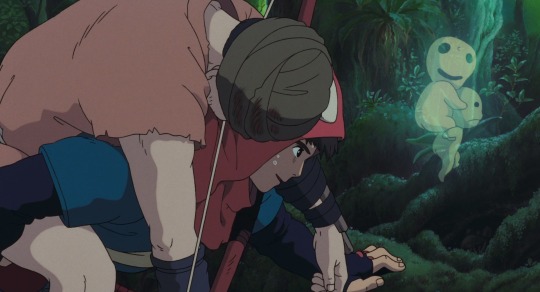
5 notes
·
View notes
Link
3 notes
·
View notes
Text
3 Negara - Singapore Malaysia Thailand
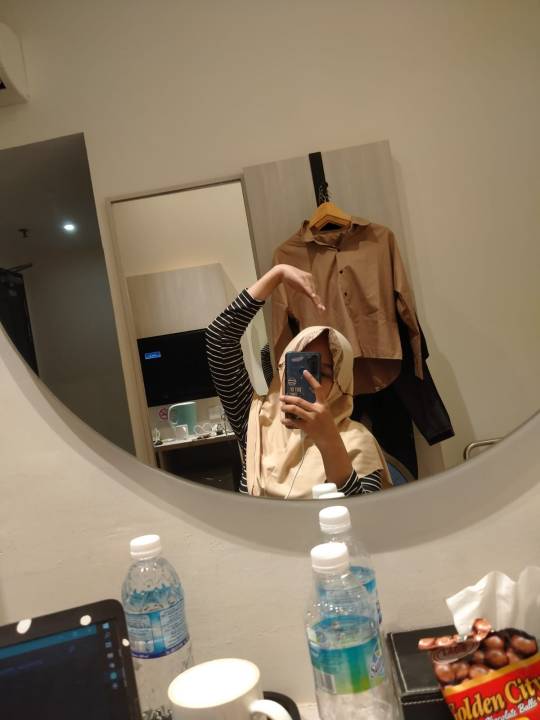
Tertanggal 8-13 Maret 2023, kembali mengukir guratan cerita pada laman kosong yang haus akan petualangan. Malam itu ada di suatu penginapan di Malaysia setelah melewati imigrasi darat Singapore. Berbagi kamar dengan seorang penulis asal NTT yang saat gambar ini diambil ia sedang asik mandi di belakang. Malam itu tidak selesai disana, rapat demi rapat masih terus dilakukan ditengah gempuran labil dan kenikmatan melihat pemandangan.
Sekedar sharing. Berikut cerita seorang wanita bagian 3 pada perjalannya mengisi paspor. Hanya untuk rekam jejak, tidak perlu teman-teman sekalian baca. Sekedar mengisi waktu menulis untuk suatu hari mengenang masa lalu yang patut untuk dirindukan.
Rabu, 8 Maret 2023

Perjalanan tidak dimulai pada tanggal tercantum. Penulis telah memasuki kendaraan bernama bus Sby-Bgr semenjak tanggal 6 maghrib silam. Ia menuju Parung, Bogor, Jawa Barat untuk menginap pada temannya yang begitu keren. Selepas itu pukul satu dini hari penulis beserta dua orang lainnya menggunakan jasa grab tetangga temannya untuk menuju bandara CGK Tangerang. Pagi itu cukup krusial, tidur hanya satu jam saja tidak menyurutkan niat untuk melanjutkan perjalanan.

Tepat pukul 7 WIB penerbangan dilancarkan. Apa kalian pernah merasakan candu, saat mengalami sesuatu dan berharap sesuatu itu dapat kita rasakan sesering mungkin dengan performa kuat serta bertajuk menyelesaikan tanggung jawab? Penulis bahkan sempat keram sebentar. Jendela pesawat saat tengah melaksanakan tugasnya selalu menampilkan sesuatu yang sangat menakjubkan.
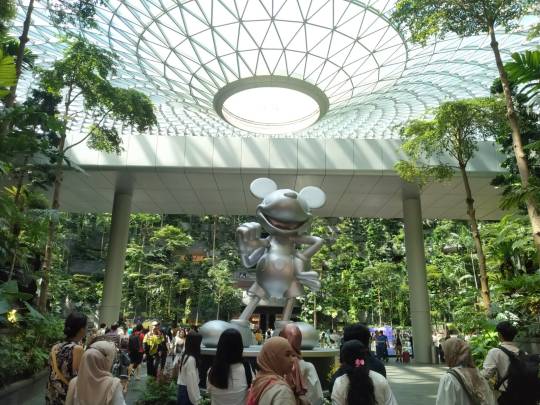
Di Singapura masih pukul 10 lebih (takaran WITA). Penulis dan tim menuju Jewel untuk melihat keindahan dunia buatan bernama air terjun imitasi dengan riasan chapter 100th Disney. Beruntungnya, saat itu ku dapat melihat langsung air itu dinyalakan tepat pukul 11.

Makanan di Singapura ternyata tidak semuanya berporsi kecil. Sebelum study campus visit sempat mampir untuk makan siang. Porsi makanannya ternyata sebesar di resto Malaysia. Paha atas dan paha bawah utuh bumbu ayam apa ya akupun tak tahu, nasi, sayur dan kuah random. Tentunya karena resto ini milih pedagang bangladesh (wajahnya seperti masyarakat India), makanan ini terjamin halal. Rasa? Dahlah enak bangettt.
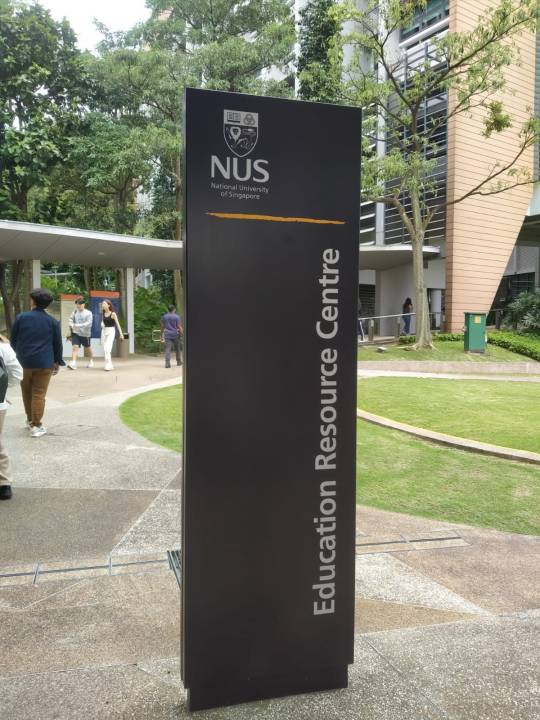
NUS! Sebelum kemari untuk yang kedua kali, ku sempet agak menyesal karena tidak solo tour buat lihat lebih jauh tentang bangunan-bangunan di kampus ternama ini. Alhamdulillah meski tidak sempat masuk ke ruang kelas, cukup puas bisa mengintip bagian belakang kampus dan cerita-cerita dari mahasiswa sana. Eh, fyi orang sini alias mahasiswanya sangat nerdy alias pinter banget. Vibesnya tuh udah kaya mereka selalu fokus dengan target, pokoknya dah kalangan atas banget. Sempet juga mampir market kampusnya buat lihat-lihat souvenir sajah.
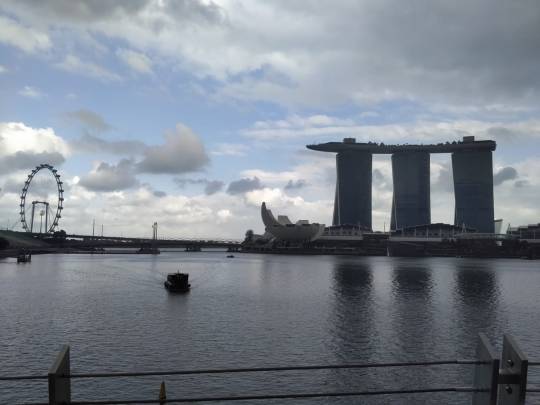
Merlion meski masuk awal sore selalu ramai. Akhirnya ku memutuskan untuk jalan di jembatan panjang sebelah kiri. Melihat langit langsung awan dengan angin “laut” sore itu begitu memukau. Sempat lihat dari jauh orang jualan di daerah sekitar situ.
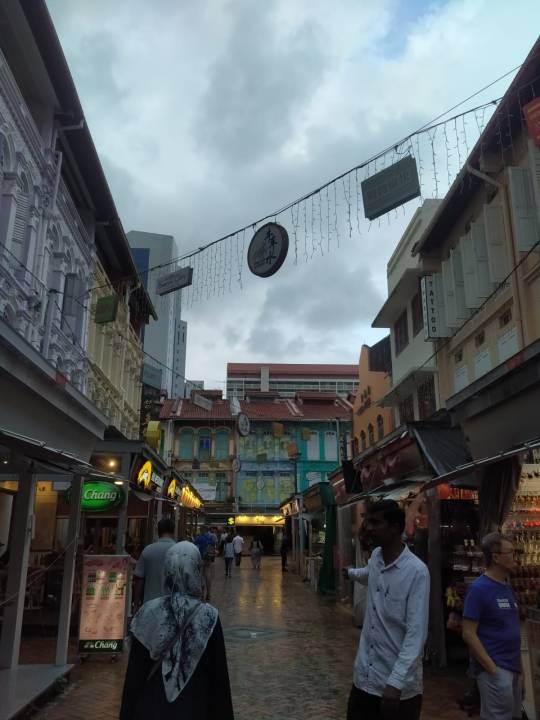
Singapore juga punya China Town. Sore itu agak sedikit gerimis. Sayangnya di lokasi ini ku tidak sempat lihat toko kanan kiri karena terlalu fokus digiring ke satu lokasi. Sempat lihat palang menu toko sebelah. Tahu ga, sebagai seseorang yang jarang tau tentang apa itu minuman keras, disini dijual ternyata. Yah bisa dipastikan disini mungkin bakal susah cari yang halal.

Ini foto salah satu menu resto yang kulewati. Saat itu satu dolar setara 10.500 rupiah. Bisa dibayangkan ya bagaimana kurs rupiah dan persiapan untuk sangu kala teman-teman mau mampir ke negara ini.
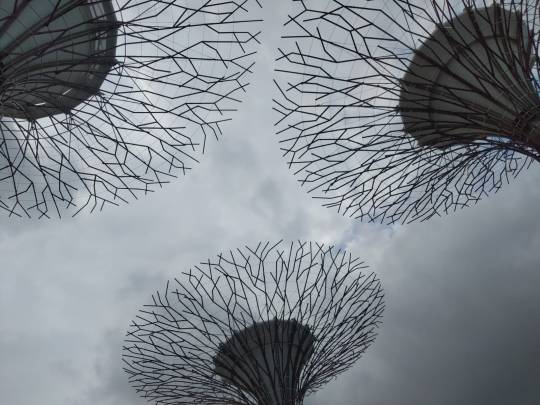
Garden by the bay kalau sore kelihatan banget akar-akarannya. Ini menjelang malam si lebih tepatnya. Kata google, ada sore entah menjelang malam jam berapa juga ku belum riset, lampu-lampu di akar itu akan menari sesuai musik yang mereka putar. Mungkin suatu hari ya bisa lihat atraksinya insya allah.

Universal Studio sedang ada perbaikan, beberapa lapis bagian kena sekat jadi tidak seleluasa itu untuk eksplor. Disini ku tidak main, berputar saja untuk menikmati arsitekturnya yang tentu luar biasa cantik. Sebelum hari berganti, kami segera melewati imigrasi Singapore dan imigrasi Malaysia jalur darat untuk sampai ke penginapan sesuai jadwal.

Kiranya seperti ini tampak lobby utama penginapan yang kami tempati.
Kamis, 9 Maret 2023
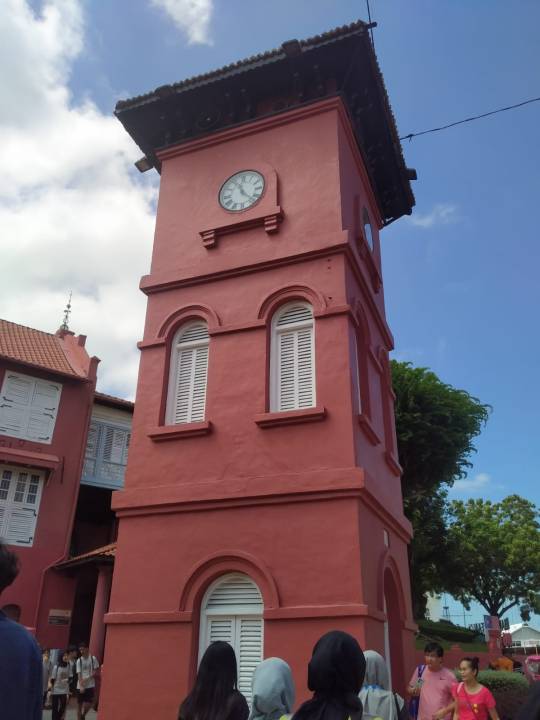
Rumah Merah Melaka, Malaysia. Disini ada yang jual ais krim abcd! Ada juga becak goes mirip sih, bentuknya unik. Di seberang kanan ada danau hijau cantik yang saat itu bertepatan banget ada kapal kecil mengangkut turis sedang lewat. Kanannya lagi ada lokasi kaya China Town gitu tapi bukan, ada patung emas kelinci besar ngga sempat kefoto. Makan siang juga daerah dekat sini, menunya dah Malaysia banget, pasti halal kalau disini.

Tau ga sih, di Putra Jaya ada hidden gems-nya! Jadi tampak depan agak jauh, preview masjid itu akan terlihat seperti ini. Lihat sebelah kiri ada eskalator turun. Nah dibawah sana ada toko cokelat murah yang masih sepi. Dijamin murah disini dari pada ikut tour guide buat beli di toko khas oleh-oleh.

Ploting barangnya nyaman banget buat belanja. Rasanya ada macem-macem dan sayangnya toko ini ga semua orang tahu. Denger-denger toko ini baru buka beberapa bulan gitu, ga sampe satu tahun.
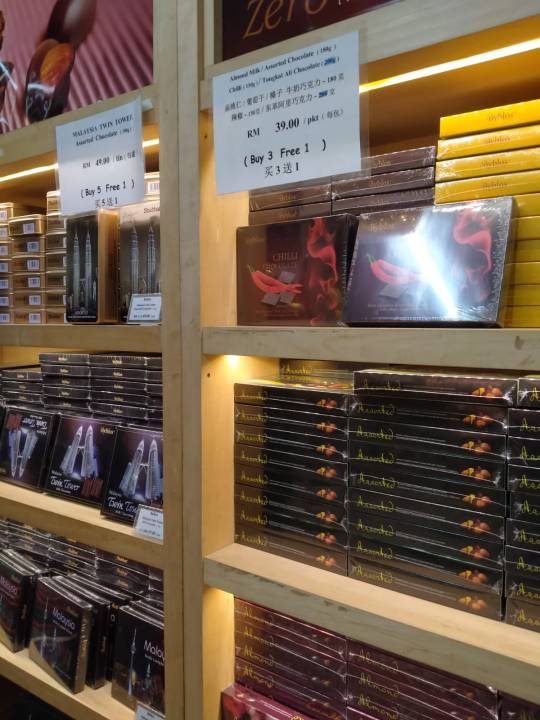
Peringatan, untuk siapapun kalian yang belanja ke apa ya lupa namanya kampung cokelat kayaknya, disini salesnya banyak. Varian rasanya banyak. Ada testernya. Harganya akan lumayan murah jika kalian beli secara berkelompok. Boleh dipilih dulu deh. Tapi emang si enak-enak. dan tentunta “tidak ramah kantong”.

Akhirnya kami selesai dengan kericuhan belanja sore itu dan kembali ke next penginapan.
-- Part 2 tidak ada
2 notes
·
View notes